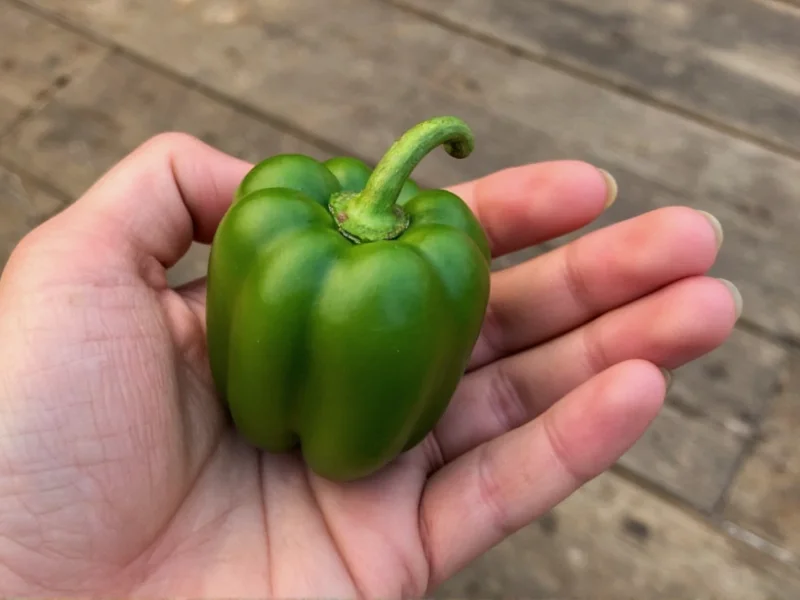Serrano peppers offer culinary versatility, but harvesting them at the right time maximizes their flavor and heat characteristics. Understanding the precise indicators of ripeness ensures you get the best possible peppers from your garden. This guide provides science-backed harvesting insights for both home gardeners and culinary enthusiasts.
Key Indicators of Serrano Pepper Ripeness
Knowing exactly when to pick a serrano pepper requires attention to multiple visual and tactile cues. Unlike some peppers that show obvious color changes, serranos provide subtle signals that indicate optimal harvest time.
Color Development
Green serranos are typically harvested before full maturity when they display a vibrant, glossy green color. As they mature, you'll notice the shoulders of the peppers beginning to develop yellow or orange hues, signaling the transition toward red. For those seeking the classic green serrano experience, harvest before these color changes begin.
When growing red serranos, patience is essential. The complete color transformation from green to bright red occurs gradually over several weeks. The peppers will first develop yellow streaks, then orange patches, and finally achieve uniform red coloration. This process typically takes 30-40 additional days beyond the green harvesting stage.
Size and Shape Characteristics
Proper serrano pepper harvesting timing also depends on size metrics. Mature serranos typically measure 1-3 inches in length with a diameter of approximately 0.5-1 inch. They maintain a distinctive tapered shape with smooth, taut skin when ready for harvest.
| Harvest Stage | Days After Planting | Pepper Length | Color Characteristics | Heat Level (Scoville) |
|---|---|---|---|---|
| Early Harvest | 55-65 days | 1-1.5 inches | Vibrant green, glossy | 10,000-15,000 SHU |
| Optimal Green | 65-80 days | 1.5-2.5 inches | Deep green, firm | 12,000-20,000 SHU |
| Transition Stage | 80-90 days | 2-3 inches | Green with yellow/orange streaks | 10,000-18,000 SHU |
| Full Red Ripeness | 90-120 days | 2.5-3 inches | Bright red, slightly softer | 8,000-15,000 SHU |
Harvesting Techniques for Maximum Plant Productivity
The best time to harvest serrano peppers isn't just about ripeness indicators—it also involves proper technique to encourage continued production. When harvesting, use sharp scissors or pruning shears to cut the stem about ¼ inch above the pepper's shoulder. Never pull peppers directly from the plant, as this can damage the delicate branches and reduce future yields.
For gardeners seeking continuous production, implement the "pick early, pick often" strategy. Removing peppers as they reach maturity signals the plant to produce more flowers and fruit. This approach typically extends your harvesting season by several weeks compared to leaving mature peppers on the plant.
How Ripeness Affects Flavor and Heat
Understanding when do serrano peppers turn red is crucial for flavor development. Green serranos deliver a bright, grassy heat with pronounced spiciness (12,000-20,000 Scoville units). As they mature toward red, the capsaicin concentration decreases slightly while sugar content increases, resulting in a more complex flavor profile with subtle fruit notes and reduced heat (8,000-15,000 Scoville units).
Professional chefs often prefer harvesting serranos at different stages for specific applications. Green peppers work best for fresh salsas and raw applications where intense heat is desired, while red serranos shine in cooked dishes, sauces, and preserves where their nuanced flavor can develop.
Common Harvesting Mistakes to Avoid
Many gardeners make critical errors when determining how to tell when serrano peppers are ripe. The most common mistakes include:
- Harvesting too early - Peppers picked before reaching minimum size (1 inch) lack developed flavor and heat
- Waiting too long - Overripe peppers become soft, develop wrinkles, and may drop from the plant
- Ignoring weather conditions - Harvest before expected frost or extended rain which can damage fruit
- Using improper tools - Pulling instead of cutting damages plant structure and reduces future yields
Post-Harvest Handling and Storage
Proper handling after serrano pepper harvesting preserves quality and extends usability. Immediately after picking, place peppers in a shaded area to prevent sunscald. For short-term storage (1-2 weeks), keep unwashed peppers in the refrigerator's crisper drawer in a perforated plastic bag.
For long-term preservation, consider these options:
- Drying - String peppers and hang in a warm, dry location with good air circulation
- Freezing - Wash, dry, and freeze whole peppers in airtight containers for 6-8 months
- Pickling - Preserve in vinegar-based brine for refrigerator storage up to 6 months
- Roasting and freezing - Roast peppers, remove skins, and freeze for future cooking
Seasonal Considerations for Serrano Harvesting
Your local climate significantly impacts serrano pepper maturity timeline. In cooler climates, the ripening process slows considerably, potentially extending the time to red ripeness beyond 120 days. Gardeners in these regions often harvest primarily green peppers to ensure complete maturation before first frost.
Conversely, in hot climates (above 90°F/32°C), serranos may mature faster but experience reduced fruit set during extreme heat. Monitor plants closely during temperature spikes, as peppers can quickly transition from green to red in just 2-3 weeks under intense heat.











 浙公网安备
33010002000092号
浙公网安备
33010002000092号 浙B2-20120091-4
浙B2-20120091-4